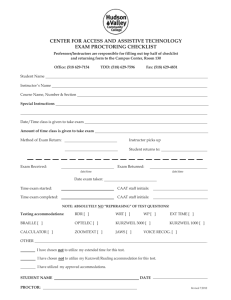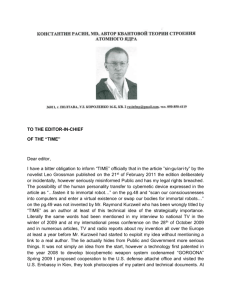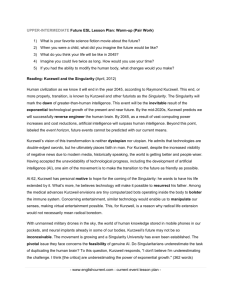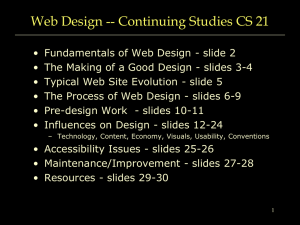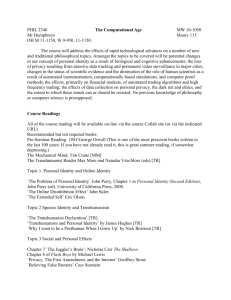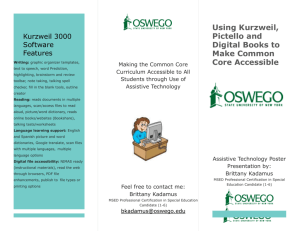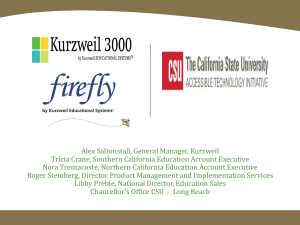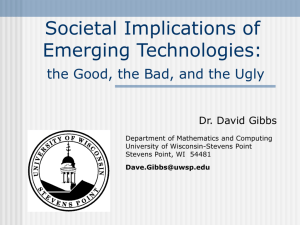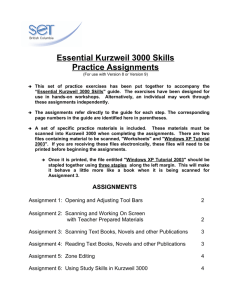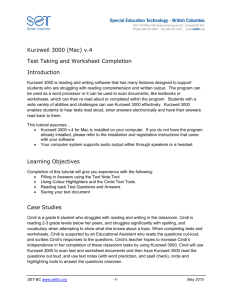concepts & design questions
advertisement
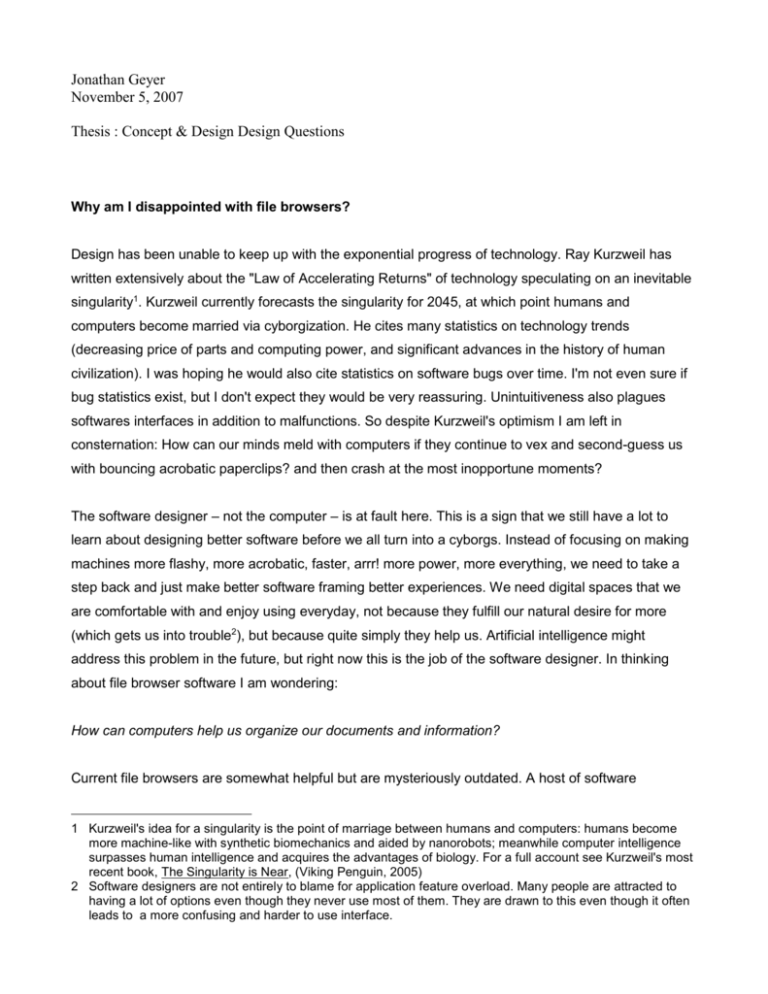
Jonathan Geyer November 5, 2007 Thesis : Concept & Design Design Questions Why am I disappointed with file browsers? Design has been unable to keep up with the exponential progress of technology. Ray Kurzweil has written extensively about the "Law of Accelerating Returns" of technology speculating on an inevitable singularity1. Kurzweil currently forecasts the singularity for 2045, at which point humans and computers become married via cyborgization. He cites many statistics on technology trends (decreasing price of parts and computing power, and significant advances in the history of human civilization). I was hoping he would also cite statistics on software bugs over time. I'm not even sure if bug statistics exist, but I don't expect they would be very reassuring. Unintuitiveness also plagues softwares interfaces in addition to malfunctions. So despite Kurzweil's optimism I am left in consternation: How can our minds meld with computers if they continue to vex and second-guess us with bouncing acrobatic paperclips? and then crash at the most inopportune moments? The software designer – not the computer – is at fault here. This is a sign that we still have a lot to learn about designing better software before we all turn into a cyborgs. Instead of focusing on making machines more flashy, more acrobatic, faster, arrr! more power, more everything, we need to take a step back and just make better software framing better experiences. We need digital spaces that we are comfortable with and enjoy using everyday, not because they fulfill our natural desire for more (which gets us into trouble2), but because quite simply they help us. Artificial intelligence might address this problem in the future, but right now this is the job of the software designer. In thinking about file browser software I am wondering: How can computers help us organize our documents and information? Current file browsers are somewhat helpful but are mysteriously outdated. A host of software 1 Kurzweil's idea for a singularity is the point of marriage between humans and computers: humans become more machine-like with synthetic biomechanics and aided by nanorobots; meanwhile computer intelligence surpasses human intelligence and acquires the advantages of biology. For a full account see Kurzweil's most recent book, The Singularity is Near, (Viking Penguin, 2005) 2 Software designers are not entirely to blame for application feature overload. Many people are attracted to having a lot of options even though they never use most of them. They are drawn to this even though it often leads to a more confusing and harder to use interface. engineers and designers built these standard file managements systems (Windows Explorer, Macintosh Finder, Konqueror for Linux, etc.) as an answer to the question above. But we should recognize that the question has no definitive answer, but still there are wrong answers. We must periodically ask ourselves this question within the context of our ever-changing world, because our documents and information are fleetingly inconstant. Years ago we didn't have to worry about thousands of emails, gigabytes of mp3's and a turbulent sea of working documents. But now within that tumbling haystack sometimes we must find a needle of a file. We may not need to do this everyday, but the day we do need it is precisely when it's crucially important. And of course, who knows what additional documents we will have to worry about in the years to come. At the present time, standard file browsers do not give users many options that they didn't have 15 or 20 years ago. There have been numerous important advances in file system architecture, and some fancier-looking file browser interfaces, but the principle mechanics for organizing and accessing files has not changed for most users. In my examination of the question "How can computers help us...?", I'm hoping to resolve some dichotomies (see below). These dichotomies are opposing ideas or approaches to building a file browser. In resolving the dichotomies is not about deciding which one of the two is right, rather what is the right mixture of ingredients that cook up to a tasty and nutritious file management experience. In other words, where do we strike the balance in creating a helpful system? Software design, like the design of any product, is not simply about what is most usable. Successful products must also be accessible and desirable for users by being relevant to the context of their lives. I already have ideas about what I think is a good direction to start that is a departure from the status quo by asking myself, "Why am I disappointed with file browsers?" These ideas are informed by my research but they are still largely untested. Despite my current direction I hope to remain openminded, and re-examine the dichotomies as I move forward with my design process. By doing surveys and comparison tests3 of different paradigms of organization, I will establish how other people are disappointed with their file browsers. With my eye on the clock, I know I haven't built much so far beyond sketches. Though actually the sketches are little more than proof that I am thinking about the problem. Since I have yet to do any usability tests or surveys, I expect and hope that the sketches will nothing like my final result. They will be necessary initial failures to iterate in the direction of a better file browser interface. Based on forthcoming results, I hope to edge closer to revealing the potential of a new approach to file browsing. This project is ambitious and I don't expect to serve up any answers to the big questions. But I hope by tackling the small ones I can make a contribution to the big picture. See the accompanying appendix for a mapping of many of the questions I am considering. 3 A comparison test is a standard usability test in which a user is asked to evaluate interfaces side-by-side. Jeffrey Rubin describes one advantage of this test: “The design team is forced to stretch its conceptions of what will work rather than just continuing along in a predictable pattern.” (For more about Comparison Tests see, Rubin, Jeffrey. Handbook of Usability Testing, John Wiley & Sons, 1994)
